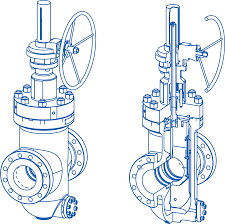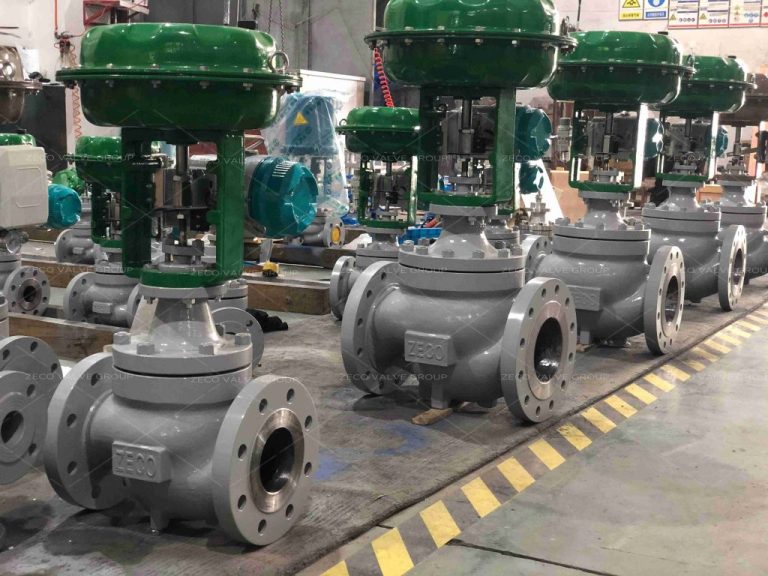Slab Through Conduit Gate Valve

The Application of Slab Through Conduit Gate Valve
The Slab Through Conduit Gate Valve is a robust and efficient solution for various industrial applications. Unlike conventional gate valves, it features a slab gate design that ensures full flow capacity, making it ideal for handling slurries, viscous fluids, and abrasive media. China gate valve manufacturers have gained prominence for producing high-quality Slab Through Conduit Gate Valves, meeting international standards. The valve’s design incorporates a resilient and durable gate valve bonnet, enhancing its reliability and longevity in demanding environments. The sluice gate valve mechanism facilitates precise control of fluid flow, making it suitable for both isolation and throttling applications. With the incorporation of advanced technologies, brands like Rotork and Cameron offer Slab Through Conduit Gate Valves that ensure smooth operation, minimal maintenance, and extended service life.
What Is Slab Through Conduit Gate Valve?
A Slab Through Conduit Gate Valve is a type of gate valve designed with a slab gate that travels between two seat rings to control the flow of fluids. It features a through conduit design, meaning the gate provides a full bore opening when fully open, allowing for minimal flow restriction and efficient passage of fluids. This type of valve is commonly used in applications requiring bi-directional flow control, such as in the oil and gas industry, pipelines, and water treatment plants. Its design ensures tight shut-off, reliability, and minimal pressure drop, making it suitable for various high-pressure and high-temperature applications.
Features of Slab Through Conduit Gate Valve
- The seat of the valve employs an o-type ring and a floating seat structure, ensuring a tight seal at the inlet and outlet of the valve. Its design allows for easy opening and closing, requiring only half the effort compared to conventional valves.
- When fully open, the valve provides a smooth and linear channel, resulting in minimal flow resistance and pressure loss. It also allows for easy cleaning through connection to a cleaning line.
- The valve features a packing structure that maintains a reliable seal without constant adjustment. Additionally, it has a unique stuffing box with an assisting sealing grease injection structure, ensuring absolutely reliable sealing and eliminating the common issue of packing leaks.
- Upon valve closure, it automatically relieves high-pressure buildup within the chamber, ensuring safe operation.
- The valve’s fully closed structure provides excellent protective performance, making it suitable for various application requirements.
Advantages of Slab Through Conduit Gate Valve
- Full bore design: Allows for unrestricted flow and minimal pressure drop, enhancing efficiency.
- Bi-directional flow control: Can handle flow in both directions, providing flexibility in applications.
- Tight shut-off: Ensures reliable sealing to prevent leakage, even in high-pressure conditions.
- Minimal maintenance: Requires less frequent maintenance due to its robust design and reliable sealing mechanism.
- Suitable for high-pressure and high-temperature applications: Designed to withstand demanding operating conditions commonly found in industries such as oil and gas, refining, and petrochemicals.
The Specifications of Slab Through Conduit Gate Valve
| Specification | Details |
|---|---|
| Type | Slab Through Conduit Gate Valve |
| Ball Material | Not applicable |
| Attachment Type | Flanged |
| Thread Standard | Not applicable |
| Thread Size | Not applicable |
| Body Material | Ductile Iron |
| Safe for Use With | Various media |
| Handle Type | Handwheel |
| Handle Material | Stainless Steel |
| Maximum Working Pressure psi | 150 psi |
| Maximum Working Pressure bar | 10.3 bar |
| Operating Pressure | Dependent on application |

The Parameter of Slab Through Conduit Gate Valve
- Design: Slab Through Conduit Gate Valve
- Body Material: Typically constructed from carbon steel, stainless steel, or other alloy materials.
- Seat Type: O-ring or floating seat structure to ensure a tight seal.
- Opening and Closing Mechanism: Requires only half the effort compared to traditional valves, facilitating easy operation.
- Flow Characteristics: Provides a smooth and linear flow path when fully open, minimizing flow resistance and pressure loss.
- Cleaning Capability: Features a smooth bore that allows for easy cleaning and maintenance, suitable for applications requiring cleanliness.
- Sealing Structure: Equipped with a reliable packing structure and grease injection system to prevent leaks and ensure zero leakage.
- Pressure Relief: Automatically unloads high pressure when closed to ensure safe operation.
- Protective Performance: Offers excellent protection and is suitable for various demanding environments and applications.
The Operation Theory of Slab Through Conduit Gate Valve
The operation theory of a Slab Through Conduit Gate Valve involves its automatic functionality and its fundamental gate valve function.
In essence, an automatic gate valve controls the flow of fluid by raising or lowering a gate within the valve body. When the valve is open, the gate lifts to allow fluid to pass through, and when closed, it descends to block the flow. This basic gate valve function is crucial for regulating the flow of various liquids or gases in pipelines, ensuring efficient operation and control of fluid systems.
The Parameters Table of Slab Through Conduit Gate Valve
| Parameter | Description |
|---|---|
| Type | Slab Through Conduit Gate Valve |
| Body Material | [Material] |
| Gate Material | [Material] |
| Seat Material | O-Ring or Floating Seat |
| Attachment Type | Flange, Welded Ends, or Threaded |
| Thread Standard | ANSI, API, DIN, etc. |
| Thread Size | Size in inches or millimeters |
| Safe for Use With | Liquids, Gases, or Both |
| Handle Type | Handwheel, Gear Operated, or Actuator |
| Handle Material | Steel, Aluminum, or Stainless Steel |
| Maximum Working Pressure | [Pressure] psi (pounds per square inch) or bar |
| Operating Pressure | [Pressure] psi (pounds per square inch) or bar (if different) |

